Table of Contents
Preface
Prerequisites
Open-Source Tools
Conventions Used in This Book
Using Code Examples
Safari® Books Online
How to Contact Us
Thanks
Chapter 1. Introduction
Analyzing Relationships to Understand People and Groups
Binary and Valued Relationships
Symmetric and Asymmetric Relationships
Multimode Relationships
From Relationships to Networks—More Than Meets the Eye
Social Networks vs. Link Analysis
The Power of Informal Networks
Terrorists and Revolutionaries: The Power of Social Networks
Social Networks in Prison
Informal Networks in Terrorist Cells
The Revolution Will Be Tweeted
Social Media and Social Networks
Egyptian Revolution and Twitter
Chapter 2. Graph Theory—A Quick Introduction
What Is a Graph?
Adjacency Matrices
Edge-Lists and Adjacency Lists
7 Bridges of Königsberg
Graph Traversals and Distances
Depth-First Traversal
Implementation
DFS with NetworkX
Breadth-First Traversal
Algorithm
BFS with NetworkX
Paths and Walks
Dijkstra’s Algorithm
Graph Distance
Graph Diameter
Why This Matters
6 Degrees of Separation is a Myth!
Small World Networks
Chapter 3. Centrality, Power, and Bottlenecks
Sample Data: The Russians are Coming!
Get Oriented in Python and NetworkX
Read Nodes and Edges from LiveJournal
Snowball Sampling
Saving and Loading a Sample Dataset from a File
Centrality
Who Is More Important in this Network?
Find the “Celebrities”
Degree centrality in the LiveJournal network
Find the Gossipmongers
Find the Communication Bottlenecks and/or Community Bridges
Putting It Together
Who Is a “Gray Cardinal?”
In practice
Klout Score
PageRank—How Google Measures Centrality
Simplified PageRank algorithm
What Can’t Centrality Metrics Tell Us?
Chapter 4. Cliques, Clusters and Components
Components and Subgraphs
Analyzing Components with Python
Islands in the Net
Subgraphs—Ego Networks
Extracting and Visualizing Ego Networks with Python
Triads
Fraternity Study—Tie Stability and Triads
Triads and Terrorists
The “Forbidden Triad” and Structural Holes
Structural Holes and Boundary Spanning
Triads in Politics
Directed Triads
Analyzing Triads in Real Networks
Real Data
Cliques
Detecting Cliques
Hierarchical Clustering
The Algorithm
Clustering Cities
Preparing Data and Clustering
Block Models
Triads, Network Density, and Conflict
Chapter 5. 2-Mode Networks
Does Campaign Finance Influence Elections?
Theory of 2-Mode Networks
Affiliation Networks
Attribute Networks
A Little Math
2-Mode Networks in Practice
PAC Networks
Candidate Networks
Expanding Multimode Networks
Exercise
Chapter 6. Going Viral! Information Diffusion
Anatomy of a Viral Video
What Did Facebook Do Right?
How Do You Estimate Critical Mass?
Wikinomics of Critical Mass
Content is (Still) King
Heterogenous Preferences
How Does Information Shape Networks (and Vice Versa)?
Birds of a Feather?
Homophily vs. Curiosity
Boundary Spanners
Weak Ties
Dunbar Number and Weak Ties
A Simple Dynamic Model in Python
Influencers in the Midst
Exercises for the Reader
Coevolution of Networks and Information
Exercises for the Reader
Why Model Networks?
Chapter 7. Graph Data in the Real World
Medium Data: The Tradition
Big Data: The Future, Starting Today
“Small Data”—Flat File Representations
EdgeList Files
.net Format
GML, GraphML, and other XML Formats
Ancient Binary Format—##h Files
“Medium Data”: Database Representation
What are Cursors?
What are Transactions?
Names
Nodes as Data, Attributes as ?
The Class
Functions and Decorators
Decorator notation
The Adaptor
Working with 2-Mode Data
Exercises for the Reader
Social Networks and Big Data
NoSQL
Structural Realities
Plain text is king
The freedom to store
Computational Complexities
Big Data is Big
Big Data at Work
What Are We Distributing?
Hadoop, S3, and MapReduce
Hive
SQL is Still Our Friend
Appendix A. Data Collection
A Note on the Ethics of Data Collection
The Old-Fashioned Way
Mining Server Logs
Mining Social Media Sites
Business and Investments
Politics, Elections, and Courts
Blogosphere and Social Bookmarking
Twitter Data Collection
Facebook
Private Ego-Networks
Facebook Social Graph API
Appendix B. Installing Software
Why (We Love) Python?
Exploratory Programming
Python
IPython
NetworkX
matplotlib
pylab: matplotlib with IPython

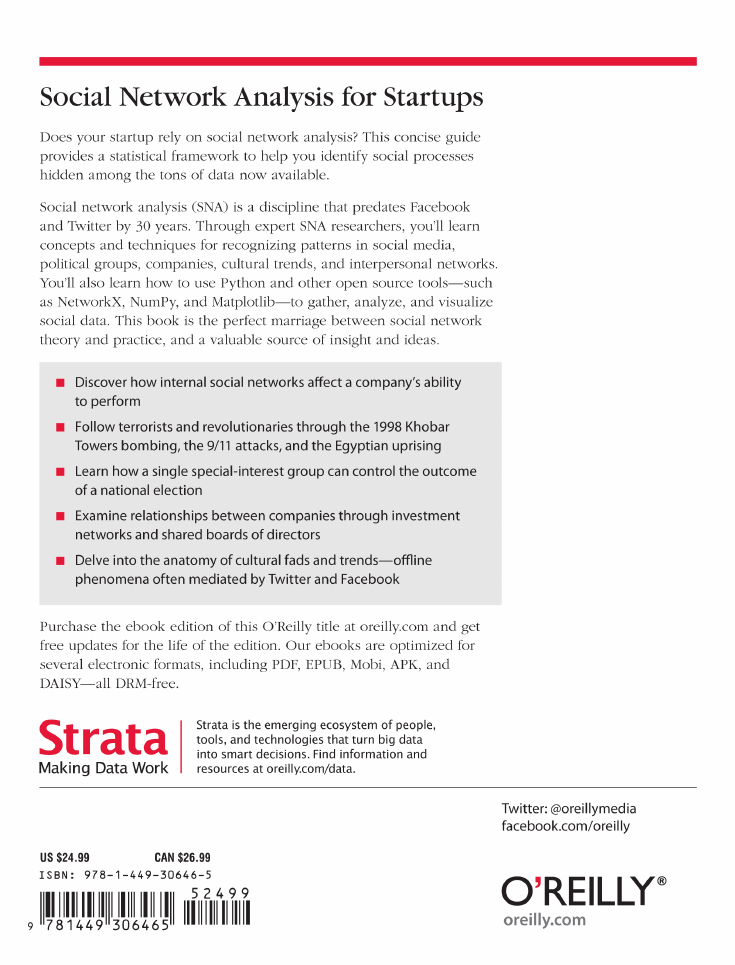
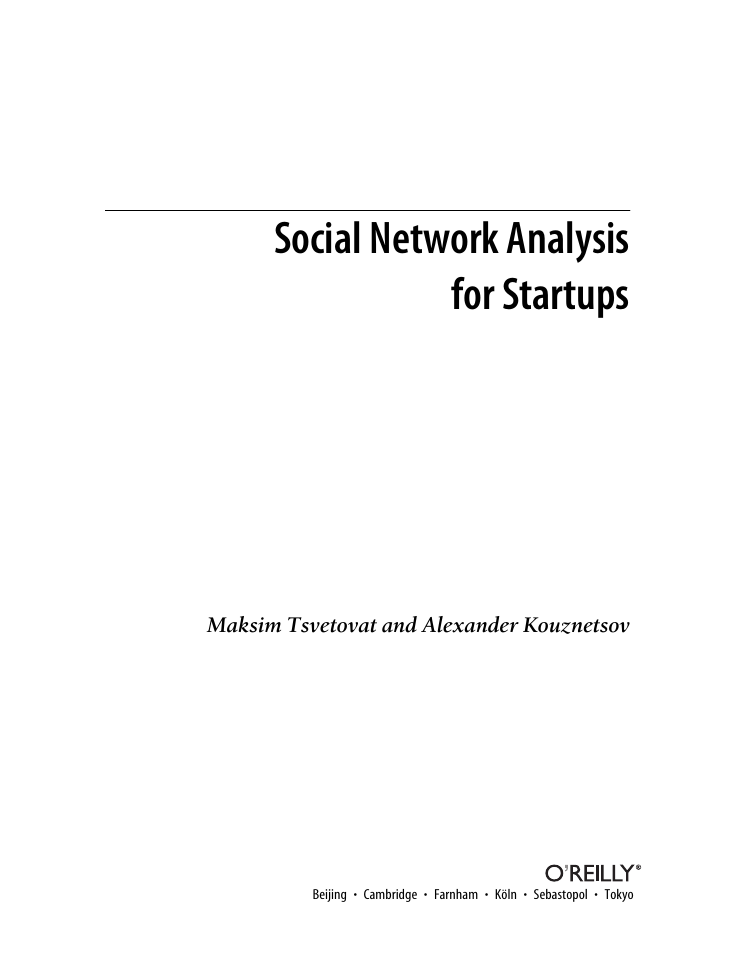
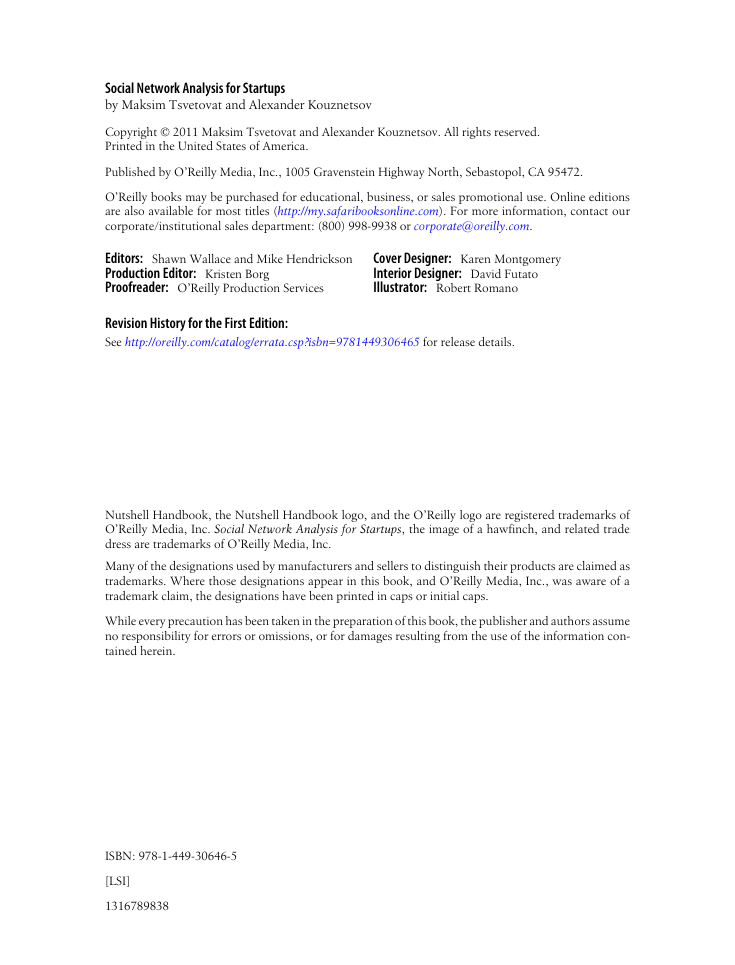
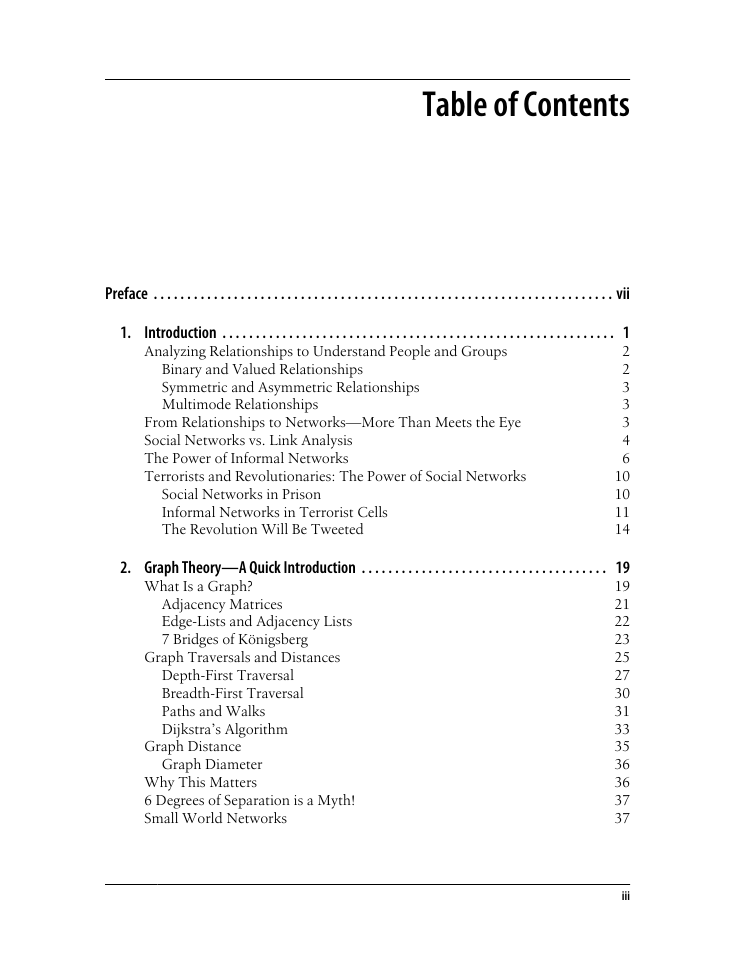
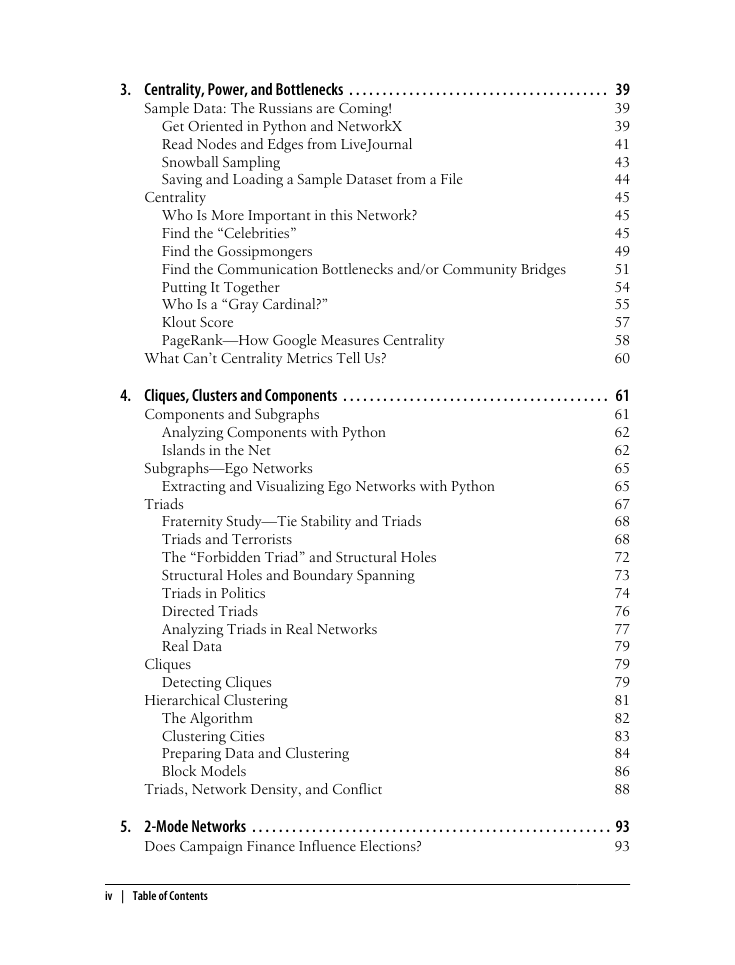
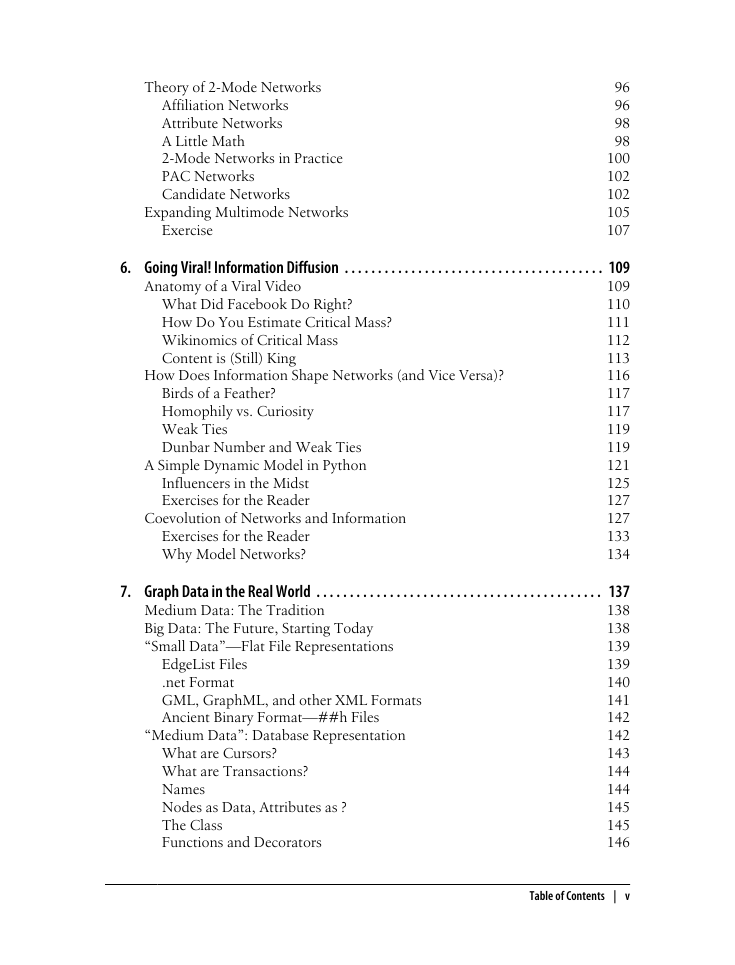
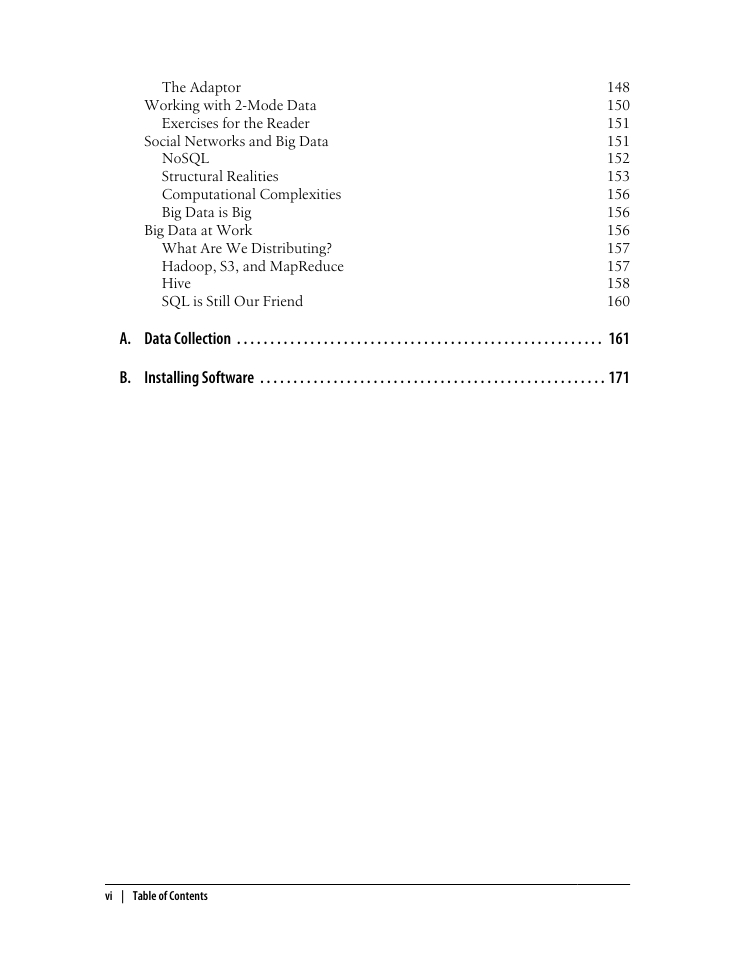








 2023年江西萍乡中考道德与法治真题及答案.doc
2023年江西萍乡中考道德与法治真题及答案.doc 2012年重庆南川中考生物真题及答案.doc
2012年重庆南川中考生物真题及答案.doc 2013年江西师范大学地理学综合及文艺理论基础考研真题.doc
2013年江西师范大学地理学综合及文艺理论基础考研真题.doc 2020年四川甘孜小升初语文真题及答案I卷.doc
2020年四川甘孜小升初语文真题及答案I卷.doc 2020年注册岩土工程师专业基础考试真题及答案.doc
2020年注册岩土工程师专业基础考试真题及答案.doc 2023-2024学年福建省厦门市九年级上学期数学月考试题及答案.doc
2023-2024学年福建省厦门市九年级上学期数学月考试题及答案.doc 2021-2022学年辽宁省沈阳市大东区九年级上学期语文期末试题及答案.doc
2021-2022学年辽宁省沈阳市大东区九年级上学期语文期末试题及答案.doc 2022-2023学年北京东城区初三第一学期物理期末试卷及答案.doc
2022-2023学年北京东城区初三第一学期物理期末试卷及答案.doc 2018上半年江西教师资格初中地理学科知识与教学能力真题及答案.doc
2018上半年江西教师资格初中地理学科知识与教学能力真题及答案.doc 2012年河北国家公务员申论考试真题及答案-省级.doc
2012年河北国家公务员申论考试真题及答案-省级.doc 2020-2021学年江苏省扬州市江都区邵樊片九年级上学期数学第一次质量检测试题及答案.doc
2020-2021学年江苏省扬州市江都区邵樊片九年级上学期数学第一次质量检测试题及答案.doc 2022下半年黑龙江教师资格证中学综合素质真题及答案.doc
2022下半年黑龙江教师资格证中学综合素质真题及答案.doc